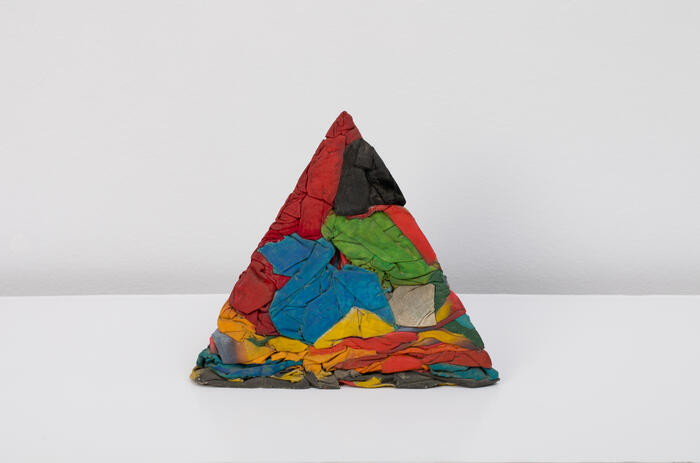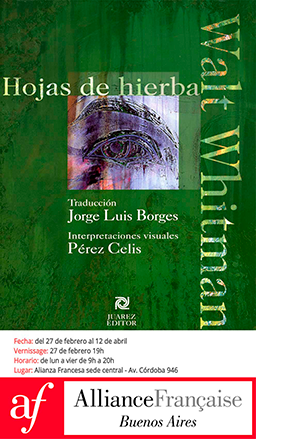CABIESES’ INTERCEPTED IMAGE

The geometry in Jorge Cabieses' (Lima, Peru, 1971) usual outline is broken with the action of the spontaneity of the curved and almost organic stroke in his second solo exhibition in the Spanish capital. The Lima-born artist thus proposes, in a certain way, a dialogue between the artificial of the synthetic and the atavistic through the incorporation of those more spontaneous brushstrokes over the usual framework of rectitude that the artist usually presents.
This new production could be an imaginary extension of the canvas or the support on which it operates, helped in part by the infinite dynamics of the lines or by the sensation conveyed by certain geometries, but also by the appearance of elements from the publishing or religious industries, from magazines to estampitas and other elements whose inaccuracies result in a pleasing contrast. So much so that, regardless of the technique —different techniques are exhibited, from collage to polyurethane and acrylic— it would seem at times that this less calculated vision is imposed on the lines and geometry, resulting in a new vision in his work.
Thus, the presence of these so-called "synthetic forms", common in Cabieses' past work, have the mission of linking the Limeño with that world he has built among two-dimensional figures, but which now grants the possibility of interacting with that other, more impulsive world, which also responds to the religious, to the daily life action, and, incidentally, to expand that spatial vision that escapes from his presumed rigidity.
Jorge Cabieses. La imagen interceptada. Until April 20. Fernando Pradilla, Claudio Coello, 20. Madrid, Spain.
Related Topics
May interest you
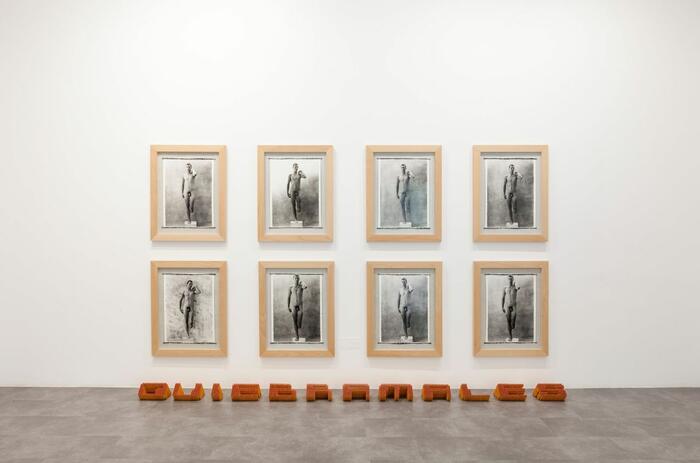
Two decades after Miguel Ángel Rojas (1946, Bogotá, Colombia) conceptualized in his project David Quiebramales his denunciation of violence and the use of education as the most efficient vehicle towards a catharsis for those who suffer it, the Madrid headquarters of La Cometa revisits his most emblematic work and reinterprets it as the framework for a kind of thematic retrospective. This commemoration of that first David Quiebramales reinforces a view that is still difficult to overcome and that, even today, serves to trace those harmful social dynamics that are created between society and war, the institutional and the political systems.
TOWARDS MIGUEL ÁNGEL ROJAS' QUIEBRAMALES
Two decades after Miguel Ángel Rojas (1946, Bogotá, Colombia) conceptualized in his project David Quiebramales his denunciation of violence and the use of education as the most efficient vehicle towards a catharsis for those who suffer it, the Madrid headquarters of La Cometa revisits his most emblematic work and reinterprets it as the framework for a kind of thematic retrospective. This commemoration of that first David Quiebramales reinforces a view that is still difficult to overcome and that, even today, serves to trace those harmful social dynamics that are created between society and war, the institutional and the political systems.

Two decades after Miguel Ángel Rojas (1946, Bogotá, Colombia) conceptualized in his project David Quiebramales his denunciation of violence and the use of education as the most efficient vehicle towards a catharsis for those who suffer it, the Madrid headquarters of La Cometa revisits his most emblematic work and reinterprets it as the framework for a kind of thematic retrospective. This commemoration of that first David Quiebramales reinforces a view that is still difficult to overcome and that, even today, serves to trace those harmful social dynamics that are created between society and war, the institutional and the political systems.
TOWARDS MIGUEL ÁNGEL ROJAS' QUIEBRAMALES
Two decades after Miguel Ángel Rojas (1946, Bogotá, Colombia) conceptualized in his project David Quiebramales his denunciation of violence and the use of education as the most efficient vehicle towards a catharsis for those who suffer it, the Madrid headquarters of La Cometa revisits his most emblematic work and reinterprets it as the framework for a kind of thematic retrospective. This commemoration of that first David Quiebramales reinforces a view that is still difficult to overcome and that, even today, serves to trace those harmful social dynamics that are created between society and war, the institutional and the political systems.
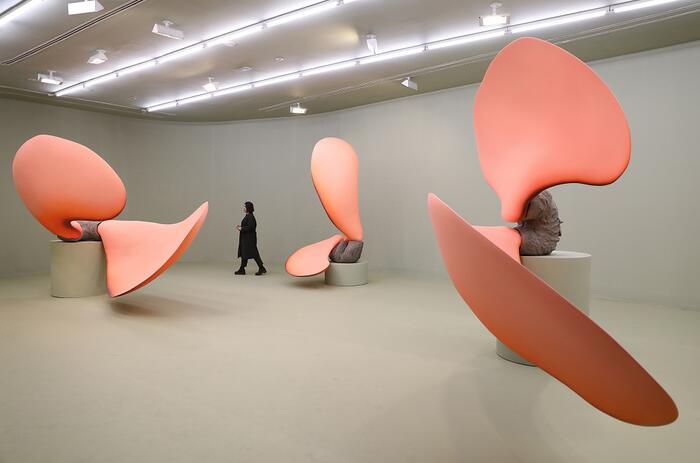
The exhibition Teresa Solar Abbourd. Pájaro sueño de máquina (Bird dream of machine) in CA2M Museum presents two large installations that condense the artist's research in recent years. It is curated by Tania Pardo and Claudia Segura Campins.
RESISTANCE AND EMPTINESS: TERESA SOLAR ABBOUD AT CA2M
The exhibition Teresa Solar Abbourd. Pájaro sueño de máquina (Bird dream of machine) in CA2M Museum presents two large installations that condense the artist's research in recent years. It is curated by Tania Pardo and Claudia Segura Campins.
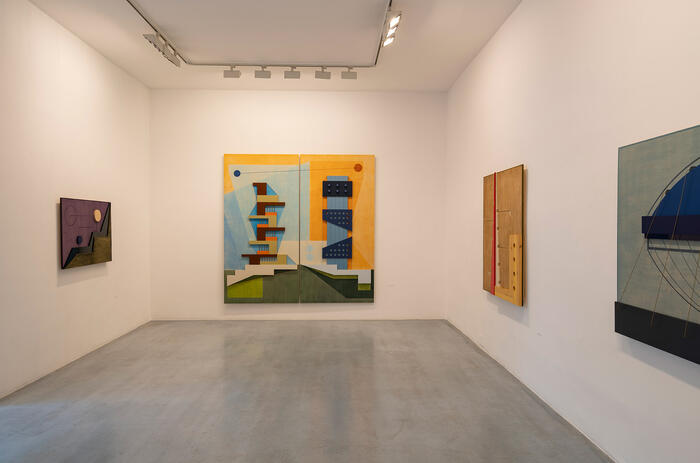
The Elba Benítez gallery presented Carlos Garaicoa's exhibition, entitled π=3,1416. The show is made up of a body of unpublished works born from the artist's desire to delve into the pictorial tradition of Latin American geometric abstraction, this time on wood.
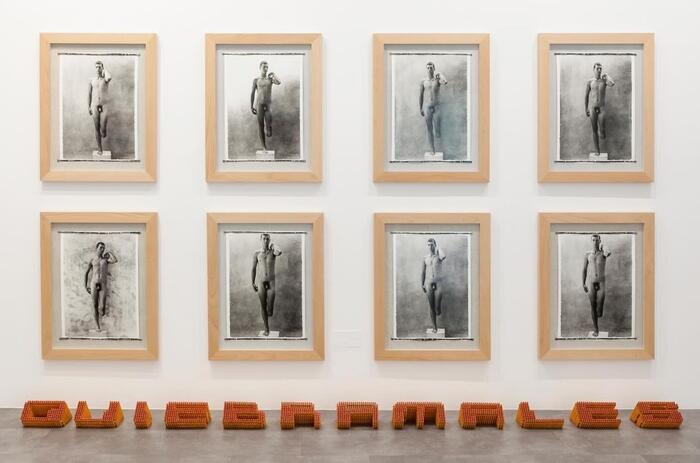
Quiebramales commemorates the twentieth anniversary of the conception of the David Quiebramales project. The exhibition at La Cometa gallery revisits the biopolitics that traverse the bodies affected by war, the structures that build (and destroy) a society, and education as a path to social justice.
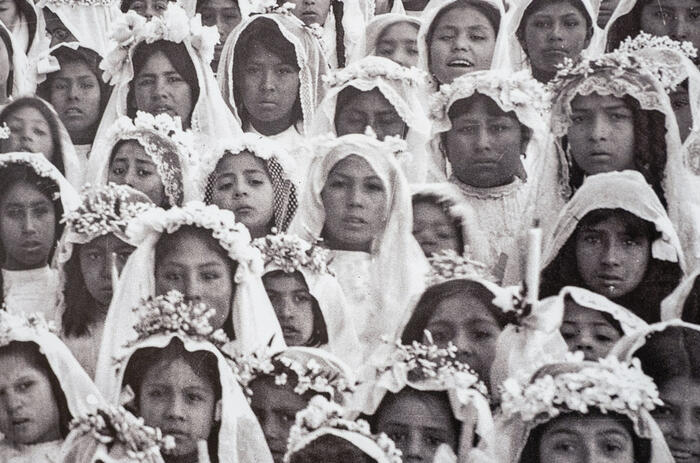
Casa de América inaugurated two exhibitions of Peruvian art: Memoria del Perú. Photographs 1890-1950, with works by various photographers that capture a significant period in the country's history, and Shipibo-Konibo. Portraits of my blood, with photographs by artist David Diaz on the life of the Shipibo-Konibo.
TWO EXHIBITIONS OF PERUVIAN PHOTOGRAPHY AT CASA DE AMERICA
Casa de América inaugurated two exhibitions of Peruvian art: Memoria del Perú. Photographs 1890-1950, with works by various photographers that capture a significant period in the country's history, and Shipibo-Konibo. Portraits of my blood, with photographs by artist David Diaz on the life of the Shipibo-Konibo.
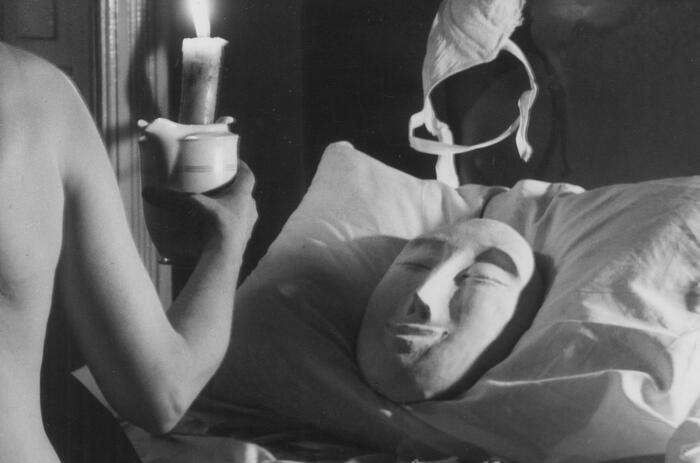
Latin American surrealist photography will have a predominant place in the 4th edition of the Castilla y León International Photography Festival, to be held from April 17 in Palencia, Spain.
SURREALISM IN LATIN AMERICA AT 4TH FIFCYL
Latin American surrealist photography will have a predominant place in the 4th edition of the Castilla y León International Photography Festival, to be held from April 17 in Palencia, Spain.
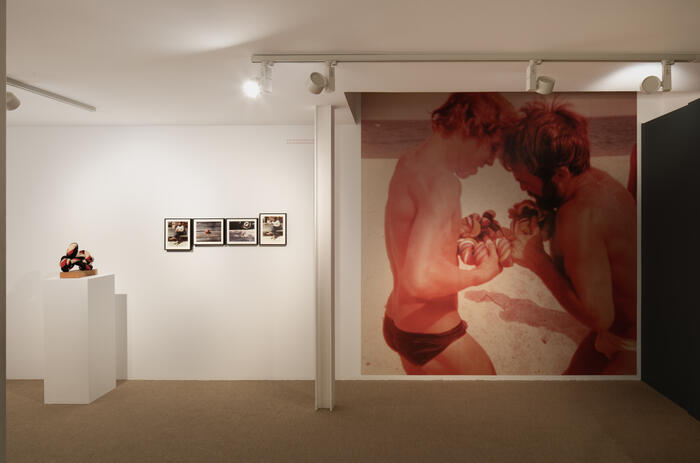
The vindication of the Peruvian Jorge Eduardo Eielson (Lima, Peru, 1924) looks fundamental, far beyond any framed motivation in the round figures of the anniversaries. However, the work being done around the centenary of his birth shows a titanic effort to explore one of the most versatile artists in the plastic arts and, perhaps in his best-known aspect, in the literature of contemporary Peru.
JORGE EIELSON, THE LAST QUIPUCAMAYOC
The vindication of the Peruvian Jorge Eduardo Eielson (Lima, Peru, 1924) looks fundamental, far beyond any framed motivation in the round figures of the anniversaries. However, the work being done around the centenary of his birth shows a titanic effort to explore one of the most versatile artists in the plastic arts and, perhaps in his best-known aspect, in the literature of contemporary Peru.
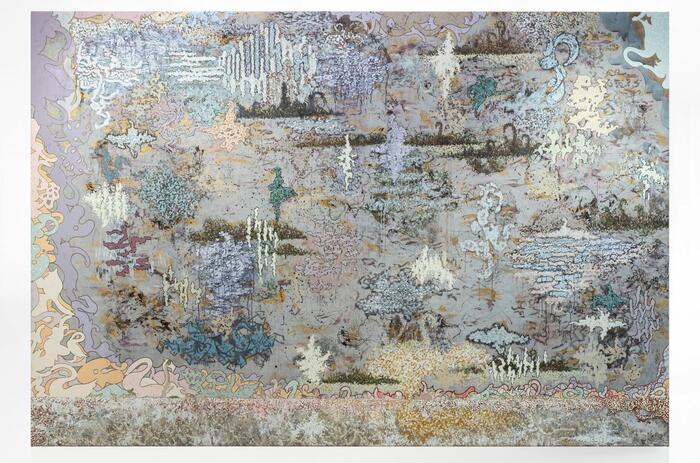
Flavio Garciandía (Caibarién, Cuba, 1954) becomes the active and passive subject of his work in his first solo exhibition in Madrid.
FLAVIO GARCIANDÍA’S SELF-REVISIONISM
Flavio Garciandía (Caibarién, Cuba, 1954) becomes the active and passive subject of his work in his first solo exhibition in Madrid.
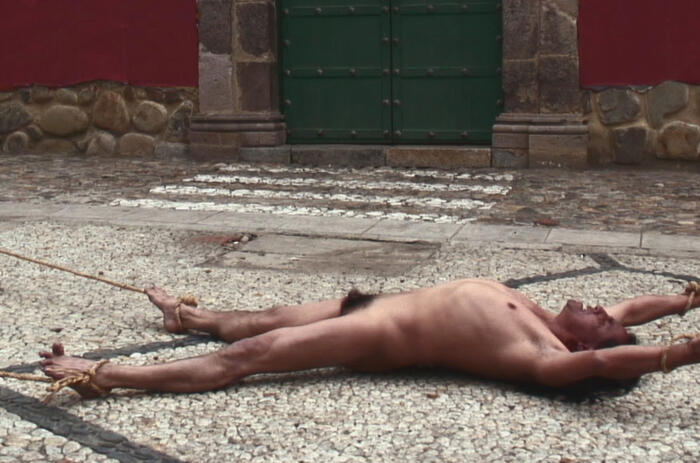
Valencian gallery Jorge Lopez is programming a solo exhibition by artist Claudia Joskowizc (Santa Cruz de la Sierra, Bolivia, 1968) that brings together the audiovisual and performative techniques with which the Bolivian artist builds the narrative and chronology of her native country.
CLAUDIA JOSKOWIZC, SOLO EXHBITION AT VALENCIA
Valencian gallery Jorge Lopez is programming a solo exhibition by artist Claudia Joskowizc (Santa Cruz de la Sierra, Bolivia, 1968) that brings together the audiovisual and performative techniques with which the Bolivian artist builds the narrative and chronology of her native country.
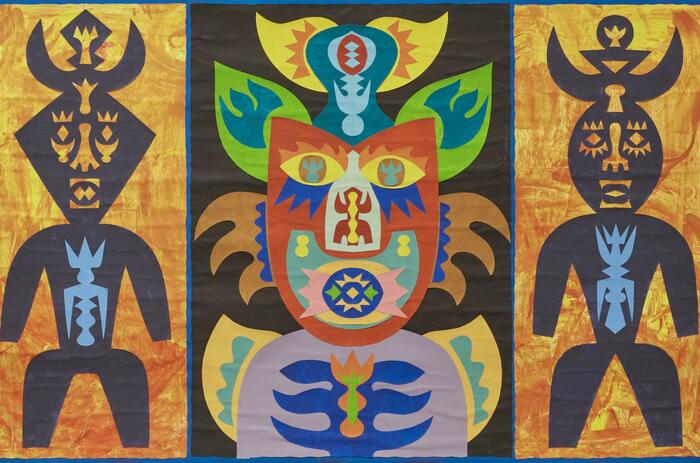
In the next edition of Pinta PArC 2024, Herlitzka & Co. (Buenos Aires) and Henrique Faria (New York) join forces to present a booth proposal that challenges conventional notions of contemporaneity and ancestry in Latin American art.
TURNING THE MEANINGS OF OUR CONTINENT UPSIDE DOWN: HERLITZKA & CO. + HENRIQUE FARIA AT PINTA PArC
In the next edition of Pinta PArC 2024, Herlitzka & Co. (Buenos Aires) and Henrique Faria (New York) join forces to present a booth proposal that challenges conventional notions of contemporaneity and ancestry in Latin American art.
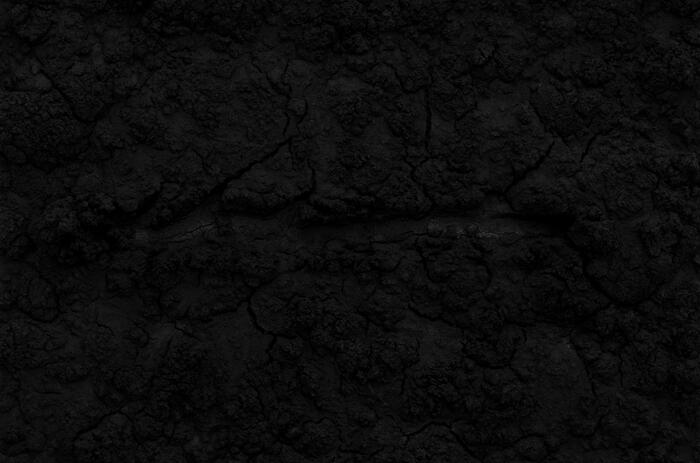
Bosco Sodi (Mexico, 1970) explores deeply in El día que nos volvimos a encontrar a universe quite distant from his recognizable large format and liveliness production to delve into the pleasures of the search for new material expressions and the abandonment of the chromatic in favour of texture, the depth of the absence of colour and concept.
BOSCO SODI AND THE VOLUME OF DARKNESS
Bosco Sodi (Mexico, 1970) explores deeply in El día que nos volvimos a encontrar a universe quite distant from his recognizable large format and liveliness production to delve into the pleasures of the search for new material expressions and the abandonment of the chromatic in favour of texture, the depth of the absence of colour and concept.
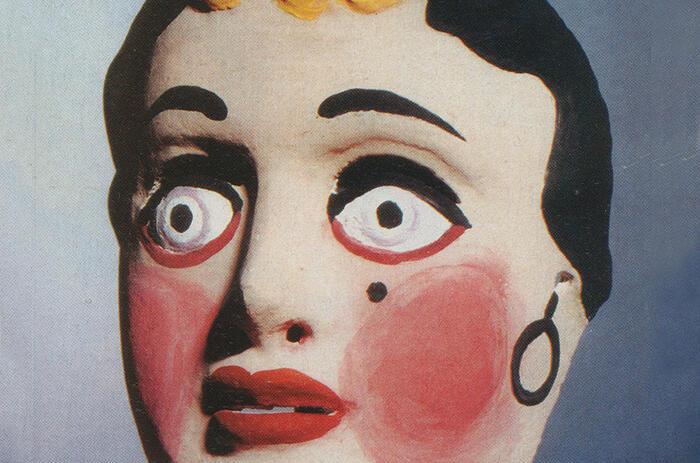
The NEXT section of Pinta PArC 2024 is set as a window to the Latin American emerging art scene, tracing a profound dialogue between diverse artistic systems and a dynamic collaboration with six galleries: Vigil Gonzales (Cusco and Buenos Aires), Salón Comunal (Bogotá), Enhorabuena Espacio (Madrid), Remota (Salta), Constitución (Buenos Aires) and Paseolab / Galería del Paseo (Lima and Punta del Este).
NEXT: VIBRANT PLATFORM AND TERRITORY FOR DIALOGUE
The NEXT section of Pinta PArC 2024 is set as a window to the Latin American emerging art scene, tracing a profound dialogue between diverse artistic systems and a dynamic collaboration with six galleries: Vigil Gonzales (Cusco and Buenos Aires), Salón Comunal (Bogotá), Enhorabuena Espacio (Madrid), Remota (Salta), Constitución (Buenos Aires) and Paseolab / Galería del Paseo (Lima and Punta del Este).
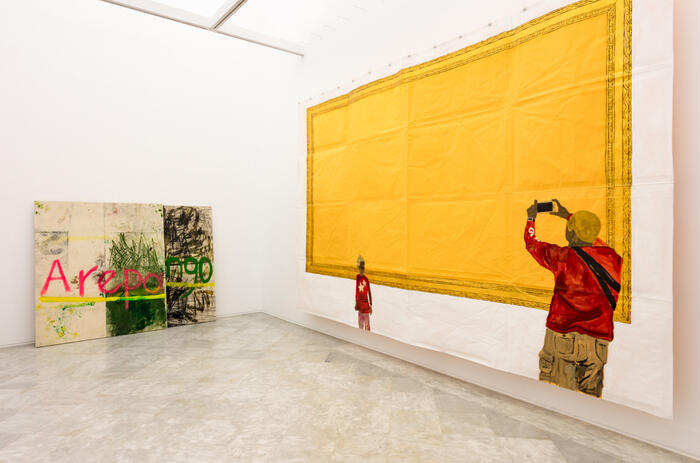
THE BALANCED REPRESENTATION OF LO LATINOAMERICANO IN THE JORGE M. PÉREZ COLLECTION
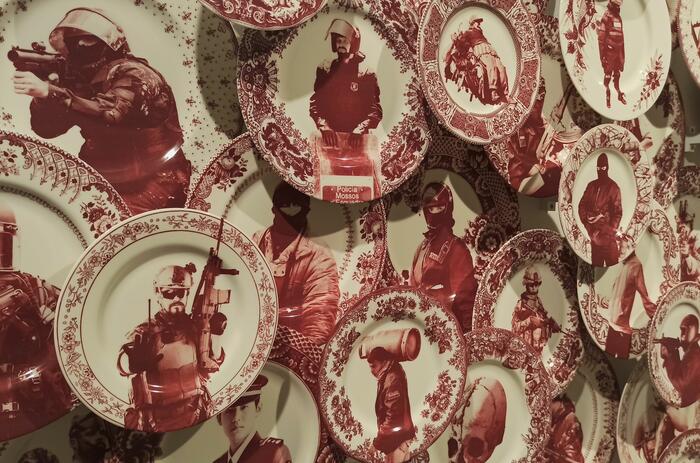
The Seville-based Fundación Valentín de Madariaga y Oya raises in its collective exhibition Herencia. Proyecto 360º the need to reconsider actions and return to the essential and almost primary link through the observation and analysis of our environment and its possibilities. The show gathers the work of fifteen international artists who become instrumental through their works for this purpose.
HERENCIA. PROYECTO 360º AND THE RECONSIDERATION OF OUR ACTIONS
The Seville-based Fundación Valentín de Madariaga y Oya raises in its collective exhibition Herencia. Proyecto 360º the need to reconsider actions and return to the essential and almost primary link through the observation and analysis of our environment and its possibilities. The show gathers the work of fifteen international artists who become instrumental through their works for this purpose.

Two decades after Miguel Ángel Rojas (1946, Bogotá, Colombia) conceptualized in his project David Quiebramales his denunciation of violence and the use of education as the most efficient vehicle towards a catharsis for those who suffer it, the Madrid headquarters of La Cometa revisits his most emblematic work and reinterprets it as the framework for a kind of thematic retrospective. This commemoration of that first David Quiebramales reinforces a view that is still difficult to overcome and that, even today, serves to trace those harmful social dynamics that are created between society and war, the institutional and the political systems.
TOWARDS MIGUEL ÁNGEL ROJAS' QUIEBRAMALES
Two decades after Miguel Ángel Rojas (1946, Bogotá, Colombia) conceptualized in his project David Quiebramales his denunciation of violence and the use of education as the most efficient vehicle towards a catharsis for those who suffer it, the Madrid headquarters of La Cometa revisits his most emblematic work and reinterprets it as the framework for a kind of thematic retrospective. This commemoration of that first David Quiebramales reinforces a view that is still difficult to overcome and that, even today, serves to trace those harmful social dynamics that are created between society and war, the institutional and the political systems.

The exhibition Teresa Solar Abbourd. Pájaro sueño de máquina (Bird dream of machine) in CA2M Museum presents two large installations that condense the artist's research in recent years. It is curated by Tania Pardo and Claudia Segura Campins.
RESISTANCE AND EMPTINESS: TERESA SOLAR ABBOUD AT CA2M
The exhibition Teresa Solar Abbourd. Pájaro sueño de máquina (Bird dream of machine) in CA2M Museum presents two large installations that condense the artist's research in recent years. It is curated by Tania Pardo and Claudia Segura Campins.

The Elba Benítez gallery presented Carlos Garaicoa's exhibition, entitled π=3,1416. The show is made up of a body of unpublished works born from the artist's desire to delve into the pictorial tradition of Latin American geometric abstraction, this time on wood.

Quiebramales commemorates the twentieth anniversary of the conception of the David Quiebramales project. The exhibition at La Cometa gallery revisits the biopolitics that traverse the bodies affected by war, the structures that build (and destroy) a society, and education as a path to social justice.

Casa de América inaugurated two exhibitions of Peruvian art: Memoria del Perú. Photographs 1890-1950, with works by various photographers that capture a significant period in the country's history, and Shipibo-Konibo. Portraits of my blood, with photographs by artist David Diaz on the life of the Shipibo-Konibo.
TWO EXHIBITIONS OF PERUVIAN PHOTOGRAPHY AT CASA DE AMERICA
Casa de América inaugurated two exhibitions of Peruvian art: Memoria del Perú. Photographs 1890-1950, with works by various photographers that capture a significant period in the country's history, and Shipibo-Konibo. Portraits of my blood, with photographs by artist David Diaz on the life of the Shipibo-Konibo.

Latin American surrealist photography will have a predominant place in the 4th edition of the Castilla y León International Photography Festival, to be held from April 17 in Palencia, Spain.
SURREALISM IN LATIN AMERICA AT 4TH FIFCYL
Latin American surrealist photography will have a predominant place in the 4th edition of the Castilla y León International Photography Festival, to be held from April 17 in Palencia, Spain.

The vindication of the Peruvian Jorge Eduardo Eielson (Lima, Peru, 1924) looks fundamental, far beyond any framed motivation in the round figures of the anniversaries. However, the work being done around the centenary of his birth shows a titanic effort to explore one of the most versatile artists in the plastic arts and, perhaps in his best-known aspect, in the literature of contemporary Peru.
JORGE EIELSON, THE LAST QUIPUCAMAYOC
The vindication of the Peruvian Jorge Eduardo Eielson (Lima, Peru, 1924) looks fundamental, far beyond any framed motivation in the round figures of the anniversaries. However, the work being done around the centenary of his birth shows a titanic effort to explore one of the most versatile artists in the plastic arts and, perhaps in his best-known aspect, in the literature of contemporary Peru.

Flavio Garciandía (Caibarién, Cuba, 1954) becomes the active and passive subject of his work in his first solo exhibition in Madrid.
FLAVIO GARCIANDÍA’S SELF-REVISIONISM
Flavio Garciandía (Caibarién, Cuba, 1954) becomes the active and passive subject of his work in his first solo exhibition in Madrid.

Valencian gallery Jorge Lopez is programming a solo exhibition by artist Claudia Joskowizc (Santa Cruz de la Sierra, Bolivia, 1968) that brings together the audiovisual and performative techniques with which the Bolivian artist builds the narrative and chronology of her native country.
CLAUDIA JOSKOWIZC, SOLO EXHBITION AT VALENCIA
Valencian gallery Jorge Lopez is programming a solo exhibition by artist Claudia Joskowizc (Santa Cruz de la Sierra, Bolivia, 1968) that brings together the audiovisual and performative techniques with which the Bolivian artist builds the narrative and chronology of her native country.

In the next edition of Pinta PArC 2024, Herlitzka & Co. (Buenos Aires) and Henrique Faria (New York) join forces to present a booth proposal that challenges conventional notions of contemporaneity and ancestry in Latin American art.
TURNING THE MEANINGS OF OUR CONTINENT UPSIDE DOWN: HERLITZKA & CO. + HENRIQUE FARIA AT PINTA PArC
In the next edition of Pinta PArC 2024, Herlitzka & Co. (Buenos Aires) and Henrique Faria (New York) join forces to present a booth proposal that challenges conventional notions of contemporaneity and ancestry in Latin American art.

Bosco Sodi (Mexico, 1970) explores deeply in El día que nos volvimos a encontrar a universe quite distant from his recognizable large format and liveliness production to delve into the pleasures of the search for new material expressions and the abandonment of the chromatic in favour of texture, the depth of the absence of colour and concept.
BOSCO SODI AND THE VOLUME OF DARKNESS
Bosco Sodi (Mexico, 1970) explores deeply in El día que nos volvimos a encontrar a universe quite distant from his recognizable large format and liveliness production to delve into the pleasures of the search for new material expressions and the abandonment of the chromatic in favour of texture, the depth of the absence of colour and concept.

The NEXT section of Pinta PArC 2024 is set as a window to the Latin American emerging art scene, tracing a profound dialogue between diverse artistic systems and a dynamic collaboration with six galleries: Vigil Gonzales (Cusco and Buenos Aires), Salón Comunal (Bogotá), Enhorabuena Espacio (Madrid), Remota (Salta), Constitución (Buenos Aires) and Paseolab / Galería del Paseo (Lima and Punta del Este).
NEXT: VIBRANT PLATFORM AND TERRITORY FOR DIALOGUE
The NEXT section of Pinta PArC 2024 is set as a window to the Latin American emerging art scene, tracing a profound dialogue between diverse artistic systems and a dynamic collaboration with six galleries: Vigil Gonzales (Cusco and Buenos Aires), Salón Comunal (Bogotá), Enhorabuena Espacio (Madrid), Remota (Salta), Constitución (Buenos Aires) and Paseolab / Galería del Paseo (Lima and Punta del Este).

THE BALANCED REPRESENTATION OF LO LATINOAMERICANO IN THE JORGE M. PÉREZ COLLECTION

The Seville-based Fundación Valentín de Madariaga y Oya raises in its collective exhibition Herencia. Proyecto 360º the need to reconsider actions and return to the essential and almost primary link through the observation and analysis of our environment and its possibilities. The show gathers the work of fifteen international artists who become instrumental through their works for this purpose.
HERENCIA. PROYECTO 360º AND THE RECONSIDERATION OF OUR ACTIONS
The Seville-based Fundación Valentín de Madariaga y Oya raises in its collective exhibition Herencia. Proyecto 360º the need to reconsider actions and return to the essential and almost primary link through the observation and analysis of our environment and its possibilities. The show gathers the work of fifteen international artists who become instrumental through their works for this purpose.

Two decades after Miguel Ángel Rojas (1946, Bogotá, Colombia) conceptualized in his project David Quiebramales his denunciation of violence and the use of education as the most efficient vehicle towards a catharsis for those who suffer it, the Madrid headquarters of La Cometa revisits his most emblematic work and reinterprets it as the framework for a kind of thematic retrospective. This commemoration of that first David Quiebramales reinforces a view that is still difficult to overcome and that, even today, serves to trace those harmful social dynamics that are created between society and war, the institutional and the political systems.
TOWARDS MIGUEL ÁNGEL ROJAS' QUIEBRAMALES
Two decades after Miguel Ángel Rojas (1946, Bogotá, Colombia) conceptualized in his project David Quiebramales his denunciation of violence and the use of education as the most efficient vehicle towards a catharsis for those who suffer it, the Madrid headquarters of La Cometa revisits his most emblematic work and reinterprets it as the framework for a kind of thematic retrospective. This commemoration of that first David Quiebramales reinforces a view that is still difficult to overcome and that, even today, serves to trace those harmful social dynamics that are created between society and war, the institutional and the political systems.

The exhibition Teresa Solar Abbourd. Pájaro sueño de máquina (Bird dream of machine) in CA2M Museum presents two large installations that condense the artist's research in recent years. It is curated by Tania Pardo and Claudia Segura Campins.
RESISTANCE AND EMPTINESS: TERESA SOLAR ABBOUD AT CA2M
The exhibition Teresa Solar Abbourd. Pájaro sueño de máquina (Bird dream of machine) in CA2M Museum presents two large installations that condense the artist's research in recent years. It is curated by Tania Pardo and Claudia Segura Campins.

The Elba Benítez gallery presented Carlos Garaicoa's exhibition, entitled π=3,1416. The show is made up of a body of unpublished works born from the artist's desire to delve into the pictorial tradition of Latin American geometric abstraction, this time on wood.

Quiebramales commemorates the twentieth anniversary of the conception of the David Quiebramales project. The exhibition at La Cometa gallery revisits the biopolitics that traverse the bodies affected by war, the structures that build (and destroy) a society, and education as a path to social justice.

Casa de América inaugurated two exhibitions of Peruvian art: Memoria del Perú. Photographs 1890-1950, with works by various photographers that capture a significant period in the country's history, and Shipibo-Konibo. Portraits of my blood, with photographs by artist David Diaz on the life of the Shipibo-Konibo.
TWO EXHIBITIONS OF PERUVIAN PHOTOGRAPHY AT CASA DE AMERICA
Casa de América inaugurated two exhibitions of Peruvian art: Memoria del Perú. Photographs 1890-1950, with works by various photographers that capture a significant period in the country's history, and Shipibo-Konibo. Portraits of my blood, with photographs by artist David Diaz on the life of the Shipibo-Konibo.

Latin American surrealist photography will have a predominant place in the 4th edition of the Castilla y León International Photography Festival, to be held from April 17 in Palencia, Spain.
SURREALISM IN LATIN AMERICA AT 4TH FIFCYL
Latin American surrealist photography will have a predominant place in the 4th edition of the Castilla y León International Photography Festival, to be held from April 17 in Palencia, Spain.

The vindication of the Peruvian Jorge Eduardo Eielson (Lima, Peru, 1924) looks fundamental, far beyond any framed motivation in the round figures of the anniversaries. However, the work being done around the centenary of his birth shows a titanic effort to explore one of the most versatile artists in the plastic arts and, perhaps in his best-known aspect, in the literature of contemporary Peru.
JORGE EIELSON, THE LAST QUIPUCAMAYOC
The vindication of the Peruvian Jorge Eduardo Eielson (Lima, Peru, 1924) looks fundamental, far beyond any framed motivation in the round figures of the anniversaries. However, the work being done around the centenary of his birth shows a titanic effort to explore one of the most versatile artists in the plastic arts and, perhaps in his best-known aspect, in the literature of contemporary Peru.

Flavio Garciandía (Caibarién, Cuba, 1954) becomes the active and passive subject of his work in his first solo exhibition in Madrid.
FLAVIO GARCIANDÍA’S SELF-REVISIONISM
Flavio Garciandía (Caibarién, Cuba, 1954) becomes the active and passive subject of his work in his first solo exhibition in Madrid.

Valencian gallery Jorge Lopez is programming a solo exhibition by artist Claudia Joskowizc (Santa Cruz de la Sierra, Bolivia, 1968) that brings together the audiovisual and performative techniques with which the Bolivian artist builds the narrative and chronology of her native country.
CLAUDIA JOSKOWIZC, SOLO EXHBITION AT VALENCIA
Valencian gallery Jorge Lopez is programming a solo exhibition by artist Claudia Joskowizc (Santa Cruz de la Sierra, Bolivia, 1968) that brings together the audiovisual and performative techniques with which the Bolivian artist builds the narrative and chronology of her native country.

In the next edition of Pinta PArC 2024, Herlitzka & Co. (Buenos Aires) and Henrique Faria (New York) join forces to present a booth proposal that challenges conventional notions of contemporaneity and ancestry in Latin American art.
TURNING THE MEANINGS OF OUR CONTINENT UPSIDE DOWN: HERLITZKA & CO. + HENRIQUE FARIA AT PINTA PArC
In the next edition of Pinta PArC 2024, Herlitzka & Co. (Buenos Aires) and Henrique Faria (New York) join forces to present a booth proposal that challenges conventional notions of contemporaneity and ancestry in Latin American art.

Bosco Sodi (Mexico, 1970) explores deeply in El día que nos volvimos a encontrar a universe quite distant from his recognizable large format and liveliness production to delve into the pleasures of the search for new material expressions and the abandonment of the chromatic in favour of texture, the depth of the absence of colour and concept.
BOSCO SODI AND THE VOLUME OF DARKNESS
Bosco Sodi (Mexico, 1970) explores deeply in El día que nos volvimos a encontrar a universe quite distant from his recognizable large format and liveliness production to delve into the pleasures of the search for new material expressions and the abandonment of the chromatic in favour of texture, the depth of the absence of colour and concept.

The NEXT section of Pinta PArC 2024 is set as a window to the Latin American emerging art scene, tracing a profound dialogue between diverse artistic systems and a dynamic collaboration with six galleries: Vigil Gonzales (Cusco and Buenos Aires), Salón Comunal (Bogotá), Enhorabuena Espacio (Madrid), Remota (Salta), Constitución (Buenos Aires) and Paseolab / Galería del Paseo (Lima and Punta del Este).
NEXT: VIBRANT PLATFORM AND TERRITORY FOR DIALOGUE
The NEXT section of Pinta PArC 2024 is set as a window to the Latin American emerging art scene, tracing a profound dialogue between diverse artistic systems and a dynamic collaboration with six galleries: Vigil Gonzales (Cusco and Buenos Aires), Salón Comunal (Bogotá), Enhorabuena Espacio (Madrid), Remota (Salta), Constitución (Buenos Aires) and Paseolab / Galería del Paseo (Lima and Punta del Este).

THE BALANCED REPRESENTATION OF LO LATINOAMERICANO IN THE JORGE M. PÉREZ COLLECTION

The Seville-based Fundación Valentín de Madariaga y Oya raises in its collective exhibition Herencia. Proyecto 360º the need to reconsider actions and return to the essential and almost primary link through the observation and analysis of our environment and its possibilities. The show gathers the work of fifteen international artists who become instrumental through their works for this purpose.
HERENCIA. PROYECTO 360º AND THE RECONSIDERATION OF OUR ACTIONS
The Seville-based Fundación Valentín de Madariaga y Oya raises in its collective exhibition Herencia. Proyecto 360º the need to reconsider actions and return to the essential and almost primary link through the observation and analysis of our environment and its possibilities. The show gathers the work of fifteen international artists who become instrumental through their works for this purpose.

Two decades after Miguel Ángel Rojas (1946, Bogotá, Colombia) conceptualized in his project David Quiebramales his denunciation of violence and the use of education as the most efficient vehicle towards a catharsis for those who suffer it, the Madrid headquarters of La Cometa revisits his most emblematic work and reinterprets it as the framework for a kind of thematic retrospective. This commemoration of that first David Quiebramales reinforces a view that is still difficult to overcome and that, even today, serves to trace those harmful social dynamics that are created between society and war, the institutional and the political systems.
TOWARDS MIGUEL ÁNGEL ROJAS' QUIEBRAMALES
Two decades after Miguel Ángel Rojas (1946, Bogotá, Colombia) conceptualized in his project David Quiebramales his denunciation of violence and the use of education as the most efficient vehicle towards a catharsis for those who suffer it, the Madrid headquarters of La Cometa revisits his most emblematic work and reinterprets it as the framework for a kind of thematic retrospective. This commemoration of that first David Quiebramales reinforces a view that is still difficult to overcome and that, even today, serves to trace those harmful social dynamics that are created between society and war, the institutional and the political systems.

The exhibition Teresa Solar Abbourd. Pájaro sueño de máquina (Bird dream of machine) in CA2M Museum presents two large installations that condense the artist's research in recent years. It is curated by Tania Pardo and Claudia Segura Campins.
RESISTANCE AND EMPTINESS: TERESA SOLAR ABBOUD AT CA2M
The exhibition Teresa Solar Abbourd. Pájaro sueño de máquina (Bird dream of machine) in CA2M Museum presents two large installations that condense the artist's research in recent years. It is curated by Tania Pardo and Claudia Segura Campins.

The Elba Benítez gallery presented Carlos Garaicoa's exhibition, entitled π=3,1416. The show is made up of a body of unpublished works born from the artist's desire to delve into the pictorial tradition of Latin American geometric abstraction, this time on wood.

Quiebramales commemorates the twentieth anniversary of the conception of the David Quiebramales project. The exhibition at La Cometa gallery revisits the biopolitics that traverse the bodies affected by war, the structures that build (and destroy) a society, and education as a path to social justice.

Casa de América inaugurated two exhibitions of Peruvian art: Memoria del Perú. Photographs 1890-1950, with works by various photographers that capture a significant period in the country's history, and Shipibo-Konibo. Portraits of my blood, with photographs by artist David Diaz on the life of the Shipibo-Konibo.
TWO EXHIBITIONS OF PERUVIAN PHOTOGRAPHY AT CASA DE AMERICA
Casa de América inaugurated two exhibitions of Peruvian art: Memoria del Perú. Photographs 1890-1950, with works by various photographers that capture a significant period in the country's history, and Shipibo-Konibo. Portraits of my blood, with photographs by artist David Diaz on the life of the Shipibo-Konibo.

Latin American surrealist photography will have a predominant place in the 4th edition of the Castilla y León International Photography Festival, to be held from April 17 in Palencia, Spain.
SURREALISM IN LATIN AMERICA AT 4TH FIFCYL
Latin American surrealist photography will have a predominant place in the 4th edition of the Castilla y León International Photography Festival, to be held from April 17 in Palencia, Spain.

The vindication of the Peruvian Jorge Eduardo Eielson (Lima, Peru, 1924) looks fundamental, far beyond any framed motivation in the round figures of the anniversaries. However, the work being done around the centenary of his birth shows a titanic effort to explore one of the most versatile artists in the plastic arts and, perhaps in his best-known aspect, in the literature of contemporary Peru.
JORGE EIELSON, THE LAST QUIPUCAMAYOC
The vindication of the Peruvian Jorge Eduardo Eielson (Lima, Peru, 1924) looks fundamental, far beyond any framed motivation in the round figures of the anniversaries. However, the work being done around the centenary of his birth shows a titanic effort to explore one of the most versatile artists in the plastic arts and, perhaps in his best-known aspect, in the literature of contemporary Peru.

Flavio Garciandía (Caibarién, Cuba, 1954) becomes the active and passive subject of his work in his first solo exhibition in Madrid.
FLAVIO GARCIANDÍA’S SELF-REVISIONISM
Flavio Garciandía (Caibarién, Cuba, 1954) becomes the active and passive subject of his work in his first solo exhibition in Madrid.

Valencian gallery Jorge Lopez is programming a solo exhibition by artist Claudia Joskowizc (Santa Cruz de la Sierra, Bolivia, 1968) that brings together the audiovisual and performative techniques with which the Bolivian artist builds the narrative and chronology of her native country.
CLAUDIA JOSKOWIZC, SOLO EXHBITION AT VALENCIA
Valencian gallery Jorge Lopez is programming a solo exhibition by artist Claudia Joskowizc (Santa Cruz de la Sierra, Bolivia, 1968) that brings together the audiovisual and performative techniques with which the Bolivian artist builds the narrative and chronology of her native country.

In the next edition of Pinta PArC 2024, Herlitzka & Co. (Buenos Aires) and Henrique Faria (New York) join forces to present a booth proposal that challenges conventional notions of contemporaneity and ancestry in Latin American art.
TURNING THE MEANINGS OF OUR CONTINENT UPSIDE DOWN: HERLITZKA & CO. + HENRIQUE FARIA AT PINTA PArC
In the next edition of Pinta PArC 2024, Herlitzka & Co. (Buenos Aires) and Henrique Faria (New York) join forces to present a booth proposal that challenges conventional notions of contemporaneity and ancestry in Latin American art.

Bosco Sodi (Mexico, 1970) explores deeply in El día que nos volvimos a encontrar a universe quite distant from his recognizable large format and liveliness production to delve into the pleasures of the search for new material expressions and the abandonment of the chromatic in favour of texture, the depth of the absence of colour and concept.
BOSCO SODI AND THE VOLUME OF DARKNESS
Bosco Sodi (Mexico, 1970) explores deeply in El día que nos volvimos a encontrar a universe quite distant from his recognizable large format and liveliness production to delve into the pleasures of the search for new material expressions and the abandonment of the chromatic in favour of texture, the depth of the absence of colour and concept.

The NEXT section of Pinta PArC 2024 is set as a window to the Latin American emerging art scene, tracing a profound dialogue between diverse artistic systems and a dynamic collaboration with six galleries: Vigil Gonzales (Cusco and Buenos Aires), Salón Comunal (Bogotá), Enhorabuena Espacio (Madrid), Remota (Salta), Constitución (Buenos Aires) and Paseolab / Galería del Paseo (Lima and Punta del Este).
NEXT: VIBRANT PLATFORM AND TERRITORY FOR DIALOGUE
The NEXT section of Pinta PArC 2024 is set as a window to the Latin American emerging art scene, tracing a profound dialogue between diverse artistic systems and a dynamic collaboration with six galleries: Vigil Gonzales (Cusco and Buenos Aires), Salón Comunal (Bogotá), Enhorabuena Espacio (Madrid), Remota (Salta), Constitución (Buenos Aires) and Paseolab / Galería del Paseo (Lima and Punta del Este).

THE BALANCED REPRESENTATION OF LO LATINOAMERICANO IN THE JORGE M. PÉREZ COLLECTION

The Seville-based Fundación Valentín de Madariaga y Oya raises in its collective exhibition Herencia. Proyecto 360º the need to reconsider actions and return to the essential and almost primary link through the observation and analysis of our environment and its possibilities. The show gathers the work of fifteen international artists who become instrumental through their works for this purpose.
HERENCIA. PROYECTO 360º AND THE RECONSIDERATION OF OUR ACTIONS
The Seville-based Fundación Valentín de Madariaga y Oya raises in its collective exhibition Herencia. Proyecto 360º the need to reconsider actions and return to the essential and almost primary link through the observation and analysis of our environment and its possibilities. The show gathers the work of fifteen international artists who become instrumental through their works for this purpose.

Two decades after Miguel Ángel Rojas (1946, Bogotá, Colombia) conceptualized in his project David Quiebramales his denunciation of violence and the use of education as the most efficient vehicle towards a catharsis for those who suffer it, the Madrid headquarters of La Cometa revisits his most emblematic work and reinterprets it as the framework for a kind of thematic retrospective. This commemoration of that first David Quiebramales reinforces a view that is still difficult to overcome and that, even today, serves to trace those harmful social dynamics that are created between society and war, the institutional and the political systems.
TOWARDS MIGUEL ÁNGEL ROJAS' QUIEBRAMALES
Two decades after Miguel Ángel Rojas (1946, Bogotá, Colombia) conceptualized in his project David Quiebramales his denunciation of violence and the use of education as the most efficient vehicle towards a catharsis for those who suffer it, the Madrid headquarters of La Cometa revisits his most emblematic work and reinterprets it as the framework for a kind of thematic retrospective. This commemoration of that first David Quiebramales reinforces a view that is still difficult to overcome and that, even today, serves to trace those harmful social dynamics that are created between society and war, the institutional and the political systems.

The exhibition Teresa Solar Abbourd. Pájaro sueño de máquina (Bird dream of machine) in CA2M Museum presents two large installations that condense the artist's research in recent years. It is curated by Tania Pardo and Claudia Segura Campins.
RESISTANCE AND EMPTINESS: TERESA SOLAR ABBOUD AT CA2M
The exhibition Teresa Solar Abbourd. Pájaro sueño de máquina (Bird dream of machine) in CA2M Museum presents two large installations that condense the artist's research in recent years. It is curated by Tania Pardo and Claudia Segura Campins.

The Elba Benítez gallery presented Carlos Garaicoa's exhibition, entitled π=3,1416. The show is made up of a body of unpublished works born from the artist's desire to delve into the pictorial tradition of Latin American geometric abstraction, this time on wood.

Quiebramales commemorates the twentieth anniversary of the conception of the David Quiebramales project. The exhibition at La Cometa gallery revisits the biopolitics that traverse the bodies affected by war, the structures that build (and destroy) a society, and education as a path to social justice.

Casa de América inaugurated two exhibitions of Peruvian art: Memoria del Perú. Photographs 1890-1950, with works by various photographers that capture a significant period in the country's history, and Shipibo-Konibo. Portraits of my blood, with photographs by artist David Diaz on the life of the Shipibo-Konibo.
TWO EXHIBITIONS OF PERUVIAN PHOTOGRAPHY AT CASA DE AMERICA
Casa de América inaugurated two exhibitions of Peruvian art: Memoria del Perú. Photographs 1890-1950, with works by various photographers that capture a significant period in the country's history, and Shipibo-Konibo. Portraits of my blood, with photographs by artist David Diaz on the life of the Shipibo-Konibo.

Latin American surrealist photography will have a predominant place in the 4th edition of the Castilla y León International Photography Festival, to be held from April 17 in Palencia, Spain.
SURREALISM IN LATIN AMERICA AT 4TH FIFCYL
Latin American surrealist photography will have a predominant place in the 4th edition of the Castilla y León International Photography Festival, to be held from April 17 in Palencia, Spain.

The vindication of the Peruvian Jorge Eduardo Eielson (Lima, Peru, 1924) looks fundamental, far beyond any framed motivation in the round figures of the anniversaries. However, the work being done around the centenary of his birth shows a titanic effort to explore one of the most versatile artists in the plastic arts and, perhaps in his best-known aspect, in the literature of contemporary Peru.
JORGE EIELSON, THE LAST QUIPUCAMAYOC
The vindication of the Peruvian Jorge Eduardo Eielson (Lima, Peru, 1924) looks fundamental, far beyond any framed motivation in the round figures of the anniversaries. However, the work being done around the centenary of his birth shows a titanic effort to explore one of the most versatile artists in the plastic arts and, perhaps in his best-known aspect, in the literature of contemporary Peru.

Flavio Garciandía (Caibarién, Cuba, 1954) becomes the active and passive subject of his work in his first solo exhibition in Madrid.
FLAVIO GARCIANDÍA’S SELF-REVISIONISM
Flavio Garciandía (Caibarién, Cuba, 1954) becomes the active and passive subject of his work in his first solo exhibition in Madrid.

Valencian gallery Jorge Lopez is programming a solo exhibition by artist Claudia Joskowizc (Santa Cruz de la Sierra, Bolivia, 1968) that brings together the audiovisual and performative techniques with which the Bolivian artist builds the narrative and chronology of her native country.
CLAUDIA JOSKOWIZC, SOLO EXHBITION AT VALENCIA
Valencian gallery Jorge Lopez is programming a solo exhibition by artist Claudia Joskowizc (Santa Cruz de la Sierra, Bolivia, 1968) that brings together the audiovisual and performative techniques with which the Bolivian artist builds the narrative and chronology of her native country.

In the next edition of Pinta PArC 2024, Herlitzka & Co. (Buenos Aires) and Henrique Faria (New York) join forces to present a booth proposal that challenges conventional notions of contemporaneity and ancestry in Latin American art.
TURNING THE MEANINGS OF OUR CONTINENT UPSIDE DOWN: HERLITZKA & CO. + HENRIQUE FARIA AT PINTA PArC
In the next edition of Pinta PArC 2024, Herlitzka & Co. (Buenos Aires) and Henrique Faria (New York) join forces to present a booth proposal that challenges conventional notions of contemporaneity and ancestry in Latin American art.

Bosco Sodi (Mexico, 1970) explores deeply in El día que nos volvimos a encontrar a universe quite distant from his recognizable large format and liveliness production to delve into the pleasures of the search for new material expressions and the abandonment of the chromatic in favour of texture, the depth of the absence of colour and concept.
BOSCO SODI AND THE VOLUME OF DARKNESS
Bosco Sodi (Mexico, 1970) explores deeply in El día que nos volvimos a encontrar a universe quite distant from his recognizable large format and liveliness production to delve into the pleasures of the search for new material expressions and the abandonment of the chromatic in favour of texture, the depth of the absence of colour and concept.

The NEXT section of Pinta PArC 2024 is set as a window to the Latin American emerging art scene, tracing a profound dialogue between diverse artistic systems and a dynamic collaboration with six galleries: Vigil Gonzales (Cusco and Buenos Aires), Salón Comunal (Bogotá), Enhorabuena Espacio (Madrid), Remota (Salta), Constitución (Buenos Aires) and Paseolab / Galería del Paseo (Lima and Punta del Este).
NEXT: VIBRANT PLATFORM AND TERRITORY FOR DIALOGUE
The NEXT section of Pinta PArC 2024 is set as a window to the Latin American emerging art scene, tracing a profound dialogue between diverse artistic systems and a dynamic collaboration with six galleries: Vigil Gonzales (Cusco and Buenos Aires), Salón Comunal (Bogotá), Enhorabuena Espacio (Madrid), Remota (Salta), Constitución (Buenos Aires) and Paseolab / Galería del Paseo (Lima and Punta del Este).

THE BALANCED REPRESENTATION OF LO LATINOAMERICANO IN THE JORGE M. PÉREZ COLLECTION

The Seville-based Fundación Valentín de Madariaga y Oya raises in its collective exhibition Herencia. Proyecto 360º the need to reconsider actions and return to the essential and almost primary link through the observation and analysis of our environment and its possibilities. The show gathers the work of fifteen international artists who become instrumental through their works for this purpose.
HERENCIA. PROYECTO 360º AND THE RECONSIDERATION OF OUR ACTIONS
The Seville-based Fundación Valentín de Madariaga y Oya raises in its collective exhibition Herencia. Proyecto 360º the need to reconsider actions and return to the essential and almost primary link through the observation and analysis of our environment and its possibilities. The show gathers the work of fifteen international artists who become instrumental through their works for this purpose.

